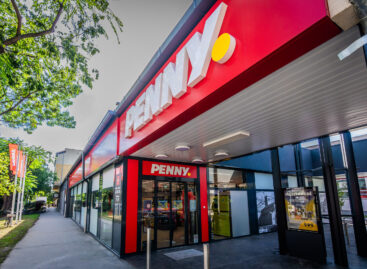Magazine: From adapting to living with the pandemic
The first wave of the pandemic was about panic and thus we panic-shopped. The second wave of the pandemic (2020 Q4) was about adjusting and with our 3rd lockdown we fully adjusted and started living with Covid-19. The winners of the past year were cooking and household care categories as they grew the most, e.g. hand sanitizer sales surged by 313 percent, prepared meal/pre-cooked meal sales jumped 43 percent.

However, due to the pandemic, new limitations arose. Although there are several dozen economical downsides that impacted FMCG, the three honourable mentions that are here to stay are: mobility and accessibility, reduced shopping frequency and the erosion of saving thus resulting in price sensitivity.
Mobility and accessibility

Andreas Christou
managing director
RetailZoom
When talking about mobility and accessibility, it is clear that shoppers are no longer keen to do ‘big-cart’ shopping, but instead customers have turned to ‘top-up’ shopping and convenient shopping, where they focus on buying the products that they identify as essential. As such, customers are less willing to travel and spend hours on shopping and instead visit the closest store. Due to these advantages, domestic chains grew by 13.6 percent in 2020, which was their highest growth in the past decade.
Reduced shopping frequency
This is all due to the fact that shoppers are now shopping less frequently, however, when they do, they buy more products and larger packs. In 2020 shoppers in domestic chains decreased their transaction numbers by 16 percent, while basket value skyrocketed to over HUF 5,400 – this was a 58-percent increase vs. 2019. This was achieved by several factors, starting by the disappearance of impulse baskets, which had declined by 36 percent. This was followed by the increase in items placed in a basket that has increased by 28.6 percent, this translated to people placing 5 additional products in their basket on average.
Price-sensitivity
However, with people spending more due to at-home consumption, inflation and other economical restrictions such as unemployment, they have less money saved and thus are looking for any potential solution to save some while continue to spend, thus the importance of private labels has risen like a Phoenix from its ashes. In 2019 domestic chains grew in value sales by 7.7 percent, while private labels grew only by 4 percent. However, the tides turned in 2020 as domestic chains grew by 13.6 percent, but private labels managed to produce an 18.3-percent sales growth.
Next steps
If one thing is certain, it is that these trends are here to stay. Basket values show no sign of slowing down and in 2021 the same number of products was placed in a basket as throughout 2020. Unfortunately, there are troubling signs for domestic chains as momentum is slowing down. The true question for domestic chains is how they can keep their new customers, how they can strengthen their relationship with existing ones and how they can attract new shoppers without relying on their proximity.
Recommendations
There are many solutions and there is not just one path that should be followed. Learning from Covid-19, the following areas could be focused on: customer engagement via personalised offers and communication, assortment optimisation, tech-driven solutions and innovations, process optimisation for cost reduction and content marketing.
Stores can use their customer trends or even loyalty data to identify and personally target customers. Assortment optimisation is an area where domestic chains have improved a lot, as 5 years ago some chains had over 70,000 SKUs delivered across several hundred stores; however, this number was downsized to 26,000 SKUs. Tech-driven solutions are a long-term investment for all chains; however, these are also the ones that attract Millennials and Gen-Z the most, thus focusing on this age group will have a long lasting effect. //
Related news
This is how Hungarians prepare for holiday shopping
🎧 Hallgasd a cikket: Lejátszás Szünet Folytatás Leállítás Nyelv: Auto…
Read more >There is light at the end of the tunnel
🎧 Hallgasd a cikket: Lejátszás Szünet Folytatás Leállítás Nyelv: Auto…
Read more >SPAR presents its own brand offering with Roland Sallai
🎧 Hallgasd a cikket: Lejátszás Szünet Folytatás Leállítás Nyelv: Auto…
Read more >Related news
Akcenta: The Hungarian economy returned to growth in 2025, risk management will come to the fore in 2026
🎧 Hallgasd a cikket: Lejátszás Szünet Folytatás Leállítás Nyelv: Auto…
Read more >At profit temperature – 3 climate trends reshaping the economy
🎧 Hallgasd a cikket: Lejátszás Szünet Folytatás Leállítás Nyelv: Auto…
Read more >BMI: The manufacturing industry ended the year with sustained expansion
🎧 Hallgasd a cikket: Lejátszás Szünet Folytatás Leállítás Nyelv: Auto…
Read more >







